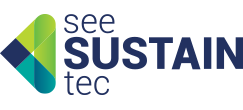The growth of the secondary photovoltaic market
 It is becoming easier to buy lower-risk operational installations
It is becoming easier to buy lower-risk operational installations
Renewable energy has been one of the most debated issues in the recent months. Many Western European countries have decided to reduce their support schemes – equally established green markets such as Germany but also nascent ones such as the UK and France. Meanwhile, less developed green economies such as Eastern Europe or the USA have only recently been offering subsidies for solar power and other renewable energies. The debate revolves around the conflict between the low competitiveness of renewable energies versus the need to fight the climate change.
But despite these ongoing conflicts, photovoltaic energy is still a popular investment and there is a new trend in the developed markets – away from the primary market (projects rights and new installations) towards the secondary market (reselling of operational installations). Developments in our online marketplace for photovoltaic projects suggest that investors’ interest in these kinds of opportunities is actually increasing as it becomes easier to buy lower risk operational installations.
In contrast, the primary market is the domain of the newer photovoltaic markets such as the Ukraine, Bulgaria and Poland. As of today photovoltaic constitutes 1% of produced electricity in the European Union, but PV production forecasts reach as high as 20% by 2020 (EPIA 2012). Clearly there is potential for both primary and secondary markets.
The secondary market
It has been estimated that there are currently nearly two million PV installations in Europe. If only 1% of them is resold (a conservative prediction), the volume of this secondary market would amount to more than €1.5 billion and growing. The leader of the PV market, both primary and secondary, is Germany, with a capacity of 32GW of which 7,634 MW was installed in 2012. Italy follows with 15GW, and together these two countries constitute the lion’s share of PV installations in Europe.
Investment climate
Investment in photovoltaic requires long-term, patient capital for a period of around 20 years, which until now has been seen as hindrance to developing solar installations. Many investors, afraid of such long-term commitments and unforeseeable liquidity requirements, decide against investing in renewable energies.
Those who invest in solar power have been sometimes forced to resell their existing PV installations, which used to be a difficult process – non-transparent, with long broker chains and complicated procedures. However, many of these obstacles have been eliminated thanks to the development of online marketplaces, which offer simplicity and security when reselling/purchasing an already functioning PV installation or project. They also lower brokering costs and shorten the process to a few clicks on one website.
Investing in operational systems has several advantages over purchasing project rights. The primary benefit is the avoidance of costs and risks associated with project development and construction. Moreover, as feed-in tariffs are being cut down all over the world, it is often the case that the existing installations receive higher subsidies.
This growing trend of the secondary photovoltaic market is reflected in the figures of projects hosted on Milk the Sun. While the initial phase was clearly dominated by primary project rights (90% of registered projects), in recent months these statistics have changed – currently 60% of available projects are secondary installations (already built or in operation). As more and more secondary projects have been registered on the portal, investors are responding with interest to these opportunities.
Challenges the industry faces and solutions
The recent years have brought numerous instabilities to the photovoltaic market. The ongoing Euro crisis has forced layoffs and cuts in production for many in the PV industry, while others have had to declare insolvency. These issues have contributed to the standstill in the photovoltaic industry experienced in many countries.
Additionally, the constant cuts in governmental support for renewable energies has not encouraged investment in solar installations. Nevertheless, as the return on investment remains between 5-10% (depending on the country; 6-8% in Germany, in Italy up to 13%), many investors are still deciding whether to allocate funds to renewable energy projects. The key to solving the problem of this currently unstable investment climate will be making people aware of the profitability of allocating funds to PV business.
Overall, there is still a great deal of interest in investing in PV. However, the investment patterns might be changing and capital is moving. Investors from southern European countries such as Spain prefer to locate their money in the stable Northern parts of Europe where lower risk comes with a lower potential returns. In contrast, investors from Germany or Scandinavia are looking towards the so-called Sunbelt where investments in renewable are more risky, but with larger potential payoffs.
These international trades should be facilitated via easy and transparent processes. Online platforms, replacing the long brokerage chains with a simplified one-on-one process seem to be gaining in popularity and constitute a solution to problems in the secondary photovoltaic market.
Blogger Felix Krause
http://www.pv-tech.org/

 It is becoming easier to buy lower-risk operational installations
It is becoming easier to buy lower-risk operational installations


